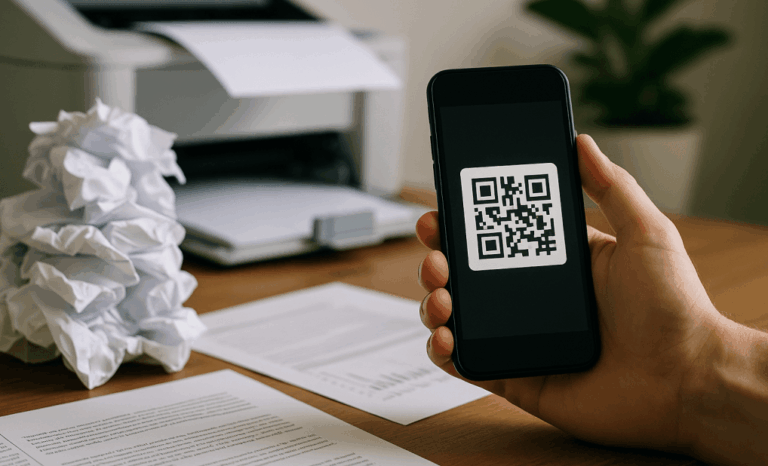Towards zero waste and energy efficiency
Businesses and individuals are increasingly looking for sustainable solutions and green initiatives to minimize waste, align with environmental goals, reduce operational costs, and improve efficiency. One of the most effective ways to reduce paper waste and printing costs with QR codes is by replacing traditional paper-based materials with scannable digital alternatives.
One area where significant gains can be made is reducing paper usage. Paper is a long-standing staple in offices, marketing, and communication that’s rapidly becoming obsolete thanks to digital technologies.
The traditional reliance on paper has led to numerous challenges. From excessive printing and storage needs to outdated information that requires constant reprints of product packaging, the financial and environmental costs are substantial.
Companies spend thousands annually on printing supplies, hardware maintenance, and labor, not to mention the ecological toll from paper production, which includes deforestation, energy use, and waste management. For individuals, paper clutter and waste can also become a problem, adding disorganization to homes and contributing to landfill overflow.
In this context, QR codes have emerged as a powerful, versatile tool to replace paper-dependent processes. These simple, scannable graphics serve as gateways to digital content, such as web pages, PDF documents, menus, videos, and more, making them ideal bridges between physical and digital realms.
With a single scan, users can access digital alternatives and real-time information, enhancing customer experience while reducing the need for printed brochures, flyers, manuals, tickets, and forms.
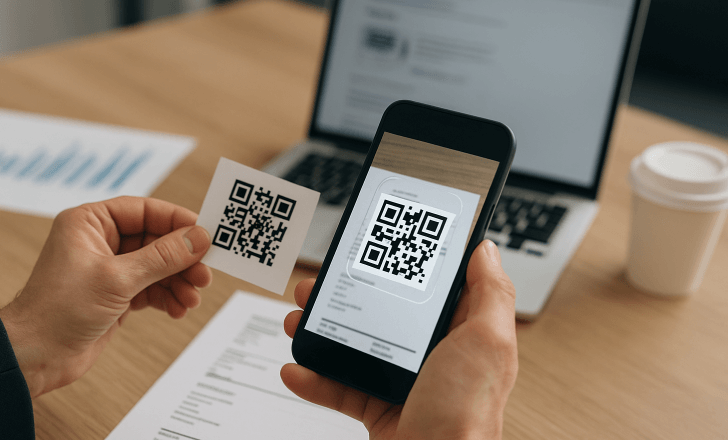
Enter QR Code KIT
Among the leaders in this space is QR Code KIT, a robust and flexible QR code generator platform designed to help users easily create, manage, and analyze QR codes.
Whether you’re a small business owner looking to digitize your menu or a large enterprise managing a nationwide marketing campaign, QR Code KIT offers scalable solutions tailored to your needs.
From dynamic QR codes that allow for content updates without changing the code itself, to rich analytics that help track engagement, QR Code KIT turns a simple technology into a strategic asset.
What sets QR Code KIT apart is its focus on customization, usability, and data-driven insights. The platform supports various QR code types: website URLs, PDF files, contact cards, event invitations, and more, each designed to eliminate the need for printed equivalents.
Custom design options, including color palettes, logo embedding, and call-to-action frames, ensure every code aligns with your brand identity and stands out in any environment. Furthermore, the integrated statistics dashboard provides real-time feedback on scan performance, user location, device types, and more, empowering you to optimize your campaigns continually.
As businesses and consumers grow more conscious of their environmental impact, adopting sustainable practices isn’t just a moral imperative; it’s a competitive advantage. QR codes, especially those created and managed through QR Code KIT, enable a meaningful shift away from wasteful printing habits toward a more innovative, greener way of engaging with information.
This article explores why reducing paper waste matters, how QR codes contribute to that mission, and how QR Code KIT can be your partner in adopting this efficient, eco-friendly approach.
Why it’s important to reduce paper waste
Reducing paper waste is no longer just a noble goal; it’s a practical necessity for businesses, institutions, and individuals navigating the digital age. Excessive paper consumption has far-reaching environmental, financial, and operational consequences that are impossible to ignore.
From an ecological standpoint, the paper industry remains a leading contributor to deforestation, water pollution, and greenhouse gas emissions. The entire lifecycle of paper production, from logging and pulping to printing and disposal, leaves a substantial carbon footprint and contributes to landfill overload, where decomposing paper emits methane, a potent greenhouse gas.
Financially, printing involves far more than just purchasing paper. Ink, toner, printer maintenance, hardware depreciation, and labor costs quickly add up, making paper-based workflows expensive and inefficient. Over time, the accumulation of physical documents also leads to space management issues, resulting in cluttered offices, storage costs, and decreased productivity.
The global shift toward digitalization makes paper-reliant processes feel outdated. Businesses that streamline operations with digital tools reduce clutter and improve workflow efficiency.
Additionally, reducing paper aligns with broader sustainability goals and can help meet regulatory requirements tied to environmental impact. Importantly, modern consumers and partners are drawn to brands that reflect eco-conscious values. Minimizing paper usage not only cuts costs but also enhances brand perception and regulatory compliance.
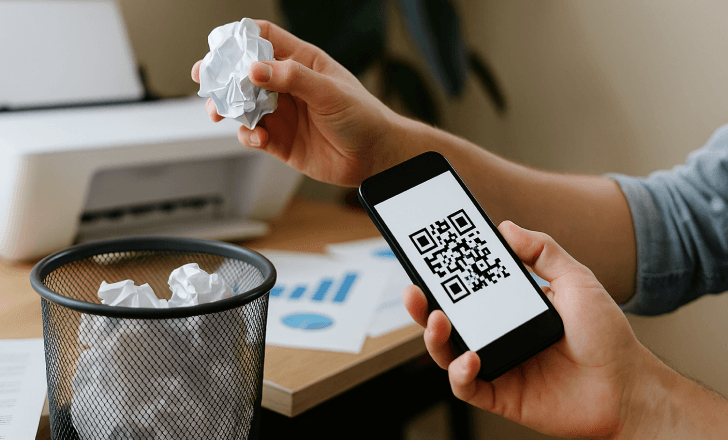
Environmental impact
Excessive paper use contributes to deforestation, water pollution, and landfill waste. The lifecycle of paper production has a significant carbon footprint.
Cost implications
Printing costs go beyond paper. Ink, maintenance, hardware, and labor all contribute to a company’s expenses.
Space and clutter
Physical documentation requires storage. Over time, paper clutter becomes unmanageable and inefficient.
Digital transition
As more businesses transition to digital, the reliance on paper should decrease, streamlining workflows.
Sustainability goals
Organizations face increasing pressure to meet sustainability benchmarks, including reducing paper consumption.

Regulatory compliance
Many regions mandate environmental reporting. Reducing paper use can help in achieving compliance.
Brand perception
Consumers value brands that demonstrate environmental responsibility, including minimal paper usage.
Why use sustainable QR codes to reduce paper waste
QR codes have emerged as a powerful tool in the push toward sustainability. They offer an effective, low-cost way to reduce paper waste while maintaining access to information. Rather than printing lengthy documents, menus, manuals, or promotional materials, businesses can now embed all that content into a single QR code.
With one scan, users gain instant access to digital versions of the same information, whether it’s a PDF, video, web page, or form, by integrating QR codes to eliminate the need for printed handouts and brochures.
Beyond environmental benefits, QR codes offer unmatched flexibility and convenience. Unlike printed materials, which must be reprinted when information changes, dynamic QR codes can be updated in real time without altering the code itself.
This means businesses no longer need to reprint menus when prices change or reissue product guides when specifications are updated. The digital nature of QR codes also allows for easy integration into mobile-first workflows, helping streamline operations and meet the expectations of today’s tech-savvy consumers.
Moreover, using QR codes signals a brand’s commitment to innovation and sustainability. It shows customers and stakeholders that your organization is forward-thinking and environmentally conscious.
In short, QR codes replace paper and waste, inefficiency, and outdated practices with smart, modern alternatives.
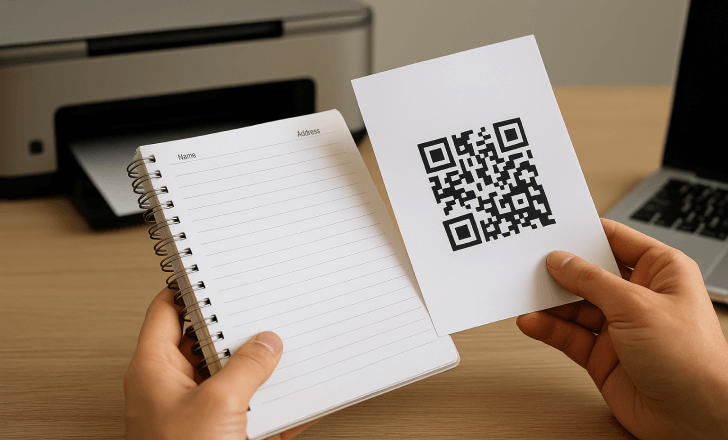
How QR codes bridge print and digital
QR codes enable access to online content without the need for printed brochures, flyers, or manuals.
Versatile applications
From event tickets to restaurant menus, QR codes replace paper in countless contexts.
Real-time updates
Edit content without reprinting materials. A single QR code can stay relevant indefinitely.
Increased engagement
Interactive QR experiences boost user engagement more than static printed text.
Analytics and tracking
QR code technology offers valuable user data, helping refine marketing strategies and content.
Contactless solutions
Especially post-pandemic, embedding QR codes offer hygienic, touch-free access to information.
Cost-effective scalability
Once created, QR codes can be reused and duplicated at virtually no cost.
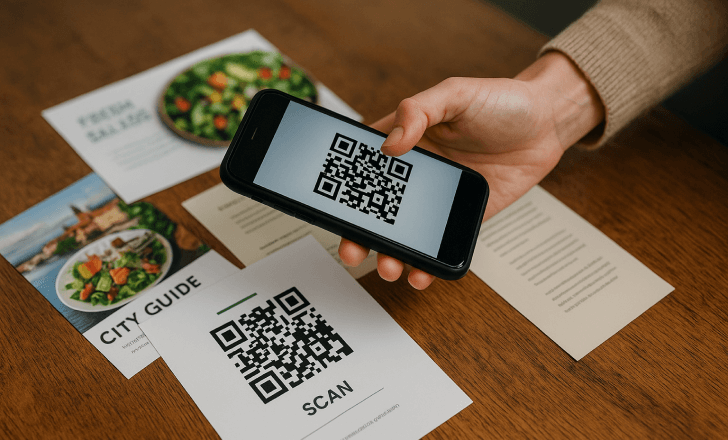
What QR Code KIT offers
QR Code KIT provides a comprehensive suite of tools designed to reduce paper waste while enhancing digital engagement.
With a wide variety of QR code types, from website URLs and PDF downloads to social media profiles and WhatsApp contacts, you can use a reliable QR code generator to replace traditional printed materials with dynamic, interactive digital content. Whether you want to share a product catalog, promote your app, or connect users directly to your social channels, QR Code KIT has you covered.
Customization is key, and QR Code KIT offers advanced design options including custom colors, shapes, logos, and call-to-action frames to ensure your QR codes perfectly reflect your brand identity and attract more scans. Plus, with high-resolution downloads, your QR codes look sharp across all platforms.
Beyond creation and design, QR Code KIT provides powerful statistics and analytics. Track user engagement with filters for various time ranges, analyze visit patterns by day, hour, and month, and gain insights into visitor devices and locations.
You can even download detailed reports in PDF or XLS formats to measure the impact of your campaigns and optimize accordingly. Together, these features make QR Code KIT a versatile platform to drive sustainable, cost-effective communication.
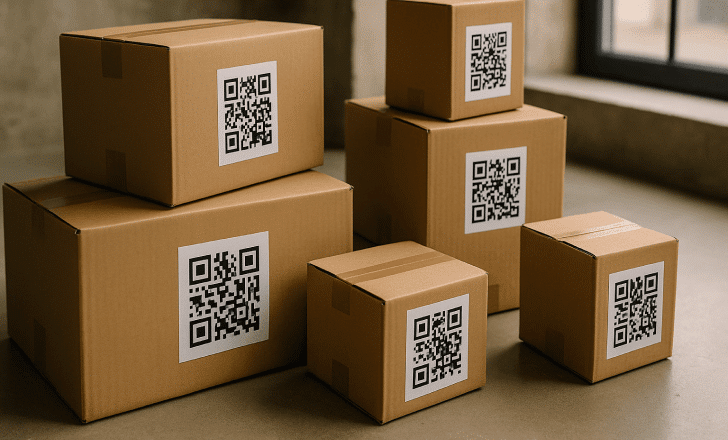
Variety of QR code types
- Website URL QR codes: Link directly to your homepage, product pages, or campaigns.
- PDF & File download QR codes: Share manuals, brochures, or white papers without printing.
- Landing page QR codes: Share all your info with texts, images, videos and more on one digital page, cutting down on printed flyers and brochures.
- Social media QR codes: Connect customers directly to your social profiles, eliminating the need for printed promo materials.
- WhatsApp QR codes: Enable instant messaging without printed phone numbers, reducing paper handouts.
- App store QR codes: Send users straight to app stores, saving promotional flyers.
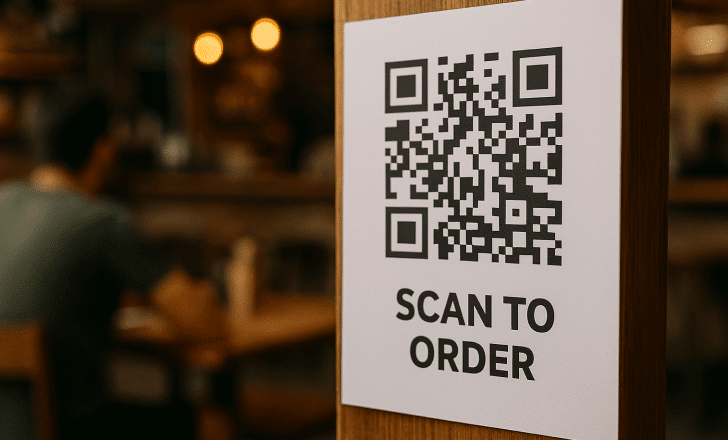
QR code design
- Custom Colors and Shapes: Match QR codes with brand identity.
- Logos and Icons: Embed logos to enhance brand recognition.
- Frames and Call-to-Actions: Encourage users to scan with visible prompts.
- High-Resolution Downloads: Ensure quality across digital and physical mediums.
Statistics and analytics
- Filter visits by last 30 days, last 7 days, current month, last 12 months, or custom date range
- View visits broken down by day, hour, and month
- Analyze visits over time with detailed trends
- See visits categorized by operating system (iOS, Android, Windows, etc.)
- Explore visit data by countries and cities for geographic insights
- Download comprehensive statistical reports in PDF or XLS formats for offline analysis
How to create QR codes with QR Code KIT
Step 1: Choose your QR type
Select from website, PDF, vCard, and more depending on your use case.
Step 2: Add your content
Enter the appropriate link, file, or contact information.
Step 3: Customize your QR code
Apply colors, add a logo, and set frames or CTAs.
Step 4: Generate the code
Create the QR code and test it for functionality.
Step 5: Download in desired format
Choose PNG, SVG, or EPS depending on your medium.
Step 6: Deploy strategically
Add QR codes to physical and digital touchpoints where your audience engages.
Frequently Asked Questions
1. How do QR codes reduce paper usage?
They allow users to access digital content instead of relying on printed versions.
2. Are QR codes expensive to maintain?
No, especially with platforms like QR Code KIT offering affordable plans.
3. Can I update a QR code’s content later?
Yes, dynamic QR codes allow for real-time updates.
4. What’s the difference between static and dynamic QR codes?
Static codes are fixed; dynamic codes are editable post-creation.
5. Can QR codes be branded?
Yes, you can customize colors, add logos, and design frames.
6. Is QR Code KIT compatible with mobile devices?
Absolutely. All QR codes created are mobile-friendly.
7. Do I need special software to scan a QR code?
Most smartphone cameras now scan QR codes natively.
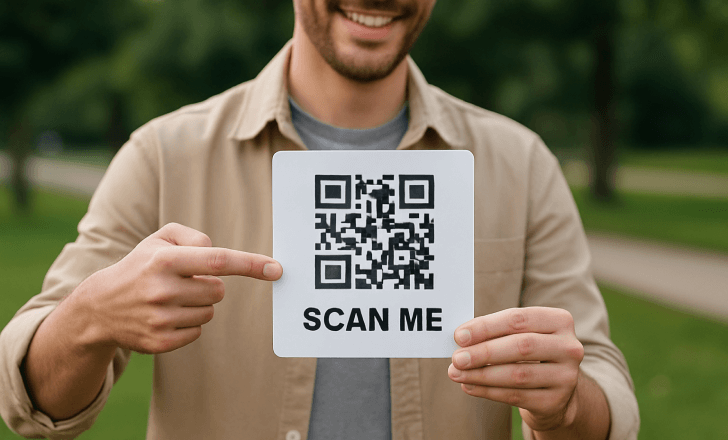
8. How secure is integrating QR codes?
They’re safe when used responsibly and link to trusted content.
9. How do I track QR code scans?
QR Code KIT offers detailed analytics for every code.
10. Can QR codes replace printed tickets?
Yes, they’re widely used for digital ticketing.

11. Can I use QR codes for marketing?
Definitely, they’re great for campaigns, feedback forms, and promotions.
12. Are there QR code size limitations?
They must be large enough to be scanned clearly, especially if printed.
13. How long do QR codes last?
Static codes last forever. Dynamic codes last as long as your subscription.
14. Can I use QR codes for customer feedback and education?
Yes, for sharing resources, assignments, and feedback forms.
15. Is the internet required to use QR codes?
Yes, for accessing online content. Some QR applications can be used offline.
16. What file formats can I upload to QR Code KIT?
PDFs, images, videos, and more.
17. Can QR codes store large amounts of data?
They’re better as pointers to data, not storage devices.
18. Do QR codes work internationally?
Yes, as long as the user has internet and a scanning device.
19. Can QR Code KIT handle bulk QR creation?
Yes, ideal for enterprise and large campaigns.
20. What industries benefit most from QR codes?
Retail, education, events, hospitality, healthcare, and logistics.

Customer engagement gets greener
Reducing paper waste and lowering printing costs are not just environmentally responsible goals; they’re smart business strategies.
QR codes, especially those created through QR Code KIT, offer a powerful, customizable, and scalable way to transition into a digital-first approach.
With dynamic capabilities, branding options, and deep analytics, QR Code KIT helps you meet sustainability goals while engaging audiences more effectively than ever before.
